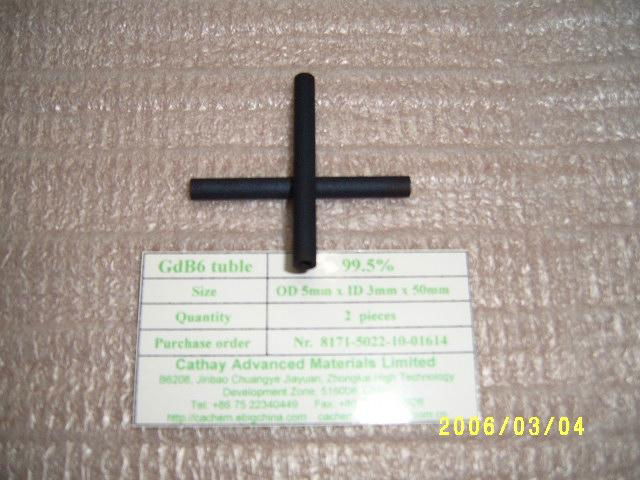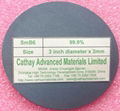| Specifications: | Polycrystalline Lanthanide metal borides are extensively characterized by techniques including scanning electron microscopy (SEM), Auger electron spectroscopy (AES), X-ray diffraction (XRD), X-ray emission spectroscopy (XES), low-energy electron diffraction (LEED), transmission electron spectroscopy (TEM) and solid state nuclear magnetic resonance spectroscopy (NMR).
Gadolinium hexaboride (GdB6) is an excellent cathode material because of its low work function, low volatility, low electrical resistivity, low sputtering coefficient, high mechanical strength and chemical resistance, etc.
lanthanum boride (LaB6), praseodymium boride (PrB6), neodymium boride (NdB6), cerium boride (CeB6), gadolinium boride (GdB6), terbium boride (TbB6), dysprosium boride (DyB6), holmium boride (HoB6), yttrium boride (YB6), samarium boride (SmB6), europium boride (EuB6), erbium boride (ErB6), thulium boride (TmB6), ytterbium boride (YbB6), lutetium boride (LuB6), strontium boride (SrB6), calcium boride (CaB6), titanium boride (TiB2), zirconium boride (ZrB2), hafnium boride (HfB2), vanadium boride (VB2), tantalum boride (TaB2), chromium borides (CrB and CrB2), molybdenum borides (MoB2, Mo2B5 and MoB), tungsten boride (W2B5), or the like, or combinations comprising at least one of the foregoing borides. |









